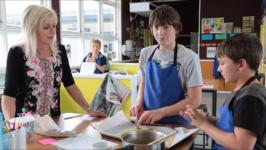Technological practice
The technological practice strand guides teachers to develop learning activities that support students to develop capabilities and dispositions as they learn how to be a technologist.
Technological practice is the action of designing and developing sustainable, socially acceptable, and fit for purpose outcomes. As students begin to think about designing an outcome, they understand more about the need or the problem they are trying to solve.
In technological practice, students examine the practice of others and undertake their own.They develop a range of outcomes, including concepts, plans, briefs, technological models, and fully realised products or systems.
Students investigate issues and existing outcomes and use the understandings gained, together with design principles and approaches, to inform their own practice. They also learn to consider ethics, legal requirements, protocols, codes of practice, and the needs of and potential impacts on stakeholders and the environment.

Components within the technological practice strand
The technological practice strand is comprised of three components. Support students to make links between the components.
The pages below provide further detail, key ideas, examples, and related resources for each component.
Guides teachers to develop learning activities that support students in their organising practices to ensure their actions are focused on the outcome being successful.
Guides teachers to develop learning activities that support students to explore what is needed, and what the requirements are of what they are designing. Teachers suggest and define ideas or concepts that the students propose will solve the problem. The students consult with the end-users and stakeholders to understand if their design concepts are feasible, viable, and will solve the problem.
Guides teachers to develop learning activities that support students to trial, model, test, and produce their outcome.
Indicators of progress
The indicators that follow describe the knowledge, skills, and understandings that students should be demonstrating in the Planning for practice component of the technology curriculum.
For achievement objectives, teacher guidance, and strategies for engaging students, visit the indicators of progression (IOPs).
